 Thinner than a very thin thing on a crash diet, KTF’s new ultra-slim SPH-V9900 looks set to grab the crown as the World’s Thinnest Mobile.
Thinner than a very thin thing on a crash diet, KTF’s new ultra-slim SPH-V9900 looks set to grab the crown as the World’s Thinnest Mobile.
Measuring a pencil-thin 6.9mm wide, this really is a tiny puppy and it looks pretty desirable – and practical too.
Unlike the lipstick-sized KTF EV-K130 phone we featured earlier this week, this phone actually looks like it can be used by people with fingers bigger than chop sticks.
Styled like a conventional phone from the front, the V9900 measures up at 113 x 50 x 6.9mm and weighs just 63g.
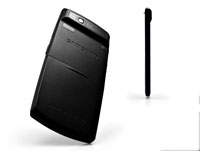 The front of the phone is dominated by a sizeable 1.9″ 262k TFT LCD display, with a familiar keypad design below.
The front of the phone is dominated by a sizeable 1.9″ 262k TFT LCD display, with a familiar keypad design below.
Flipping the camera over, there’s a 2.0 megapixel camera module at the top, with a teensy lens lurking in a raised piece of casing.
There’s also an MP3 player wedged into its super lithe frame, with 128MB of onboard memory for storing tunes and photos.
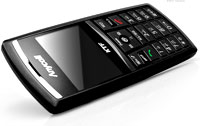 We’re still battling with the Korean translation, but we don’t think there’s any kind of memory expansion on board, which is a bit of a shame (but we guess you can’t have it all with a phone this slim!).
We’re still battling with the Korean translation, but we don’t think there’s any kind of memory expansion on board, which is a bit of a shame (but we guess you can’t have it all with a phone this slim!).
We’ve no idea about pricing on European availability yet, but this phone looks like an absolute winner to our eyes – so long as you don’t sit on the thing, of course.
 The news that ITN’s shareholders have agreed to shore up the embattled UK commercial news provider to the tune of £1 million, might be thought to inspire confidence in the organisation’s long term future.
The news that ITN’s shareholders have agreed to shore up the embattled UK commercial news provider to the tune of £1 million, might be thought to inspire confidence in the organisation’s long term future. OK, you’re used to us breaking news here, but here’s one that slipped through without us noticing. We think it’s sufficiently important for us to swallow our pride and report it anyway.
OK, you’re used to us breaking news here, but here’s one that slipped through without us noticing. We think it’s sufficiently important for us to swallow our pride and report it anyway.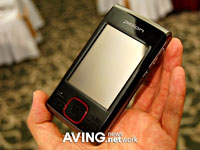 No relation to the fabulous football team known as the Bluebirds, the Korean electronics company Blue Bird have announced their shiny new BM-300 T-DMB Personal Digital Assistant (PDA).
No relation to the fabulous football team known as the Bluebirds, the Korean electronics company Blue Bird have announced their shiny new BM-300 T-DMB Personal Digital Assistant (PDA). Although the 2.8 inch touchscreen TFT-LCD (QVGA) display looks like a bit of a whopper, it can only support a miserly 240 x 320 pixel resolution -a bit of a disappointment for a PDA and hardly likely to enhance the TV watching experience,
Although the 2.8 inch touchscreen TFT-LCD (QVGA) display looks like a bit of a whopper, it can only support a miserly 240 x 320 pixel resolution -a bit of a disappointment for a PDA and hardly likely to enhance the TV watching experience,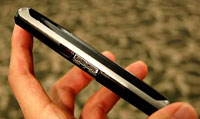 Memory can be further expanded via an SD SDIO card slot.
Memory can be further expanded via an SD SDIO card slot.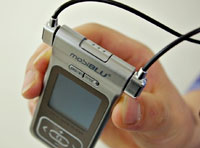 We’re getting very excited by what we’ve seen of mobiBLU’s new ultra, ultra-slim US2 media player.
We’re getting very excited by what we’ve seen of mobiBLU’s new ultra, ultra-slim US2 media player.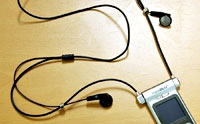 Similarly, we’ve no details about the specifics of the advertised “Audio, Video, Photo support,” but we can guess that it plays back MPEG4 files and can display JPEGs.
Similarly, we’ve no details about the specifics of the advertised “Audio, Video, Photo support,” but we can guess that it plays back MPEG4 files and can display JPEGs. Ofcom has just issued guidance that GPS repeaters are probably illegal in the UK, both in their use and their sale.
Ofcom has just issued guidance that GPS repeaters are probably illegal in the UK, both in their use and their sale. GPS devices need to be able to receive the positional information from satellites. Initially this involved having line-of-sight to the ‘birds’, but as chip-sets have improved, they’ve become more sensitive, so requiring less direct sight. If GPS units work within buildings, they do so at the sacrifice of accuracy. Even with the chip improvements, GPS will not work within buildings, and certainly not underground.
GPS devices need to be able to receive the positional information from satellites. Initially this involved having line-of-sight to the ‘birds’, but as chip-sets have improved, they’ve become more sensitive, so requiring less direct sight. If GPS units work within buildings, they do so at the sacrifice of accuracy. Even with the chip improvements, GPS will not work within buildings, and certainly not underground. If you’re finding the relentless march of technology to be a little too pacey for your liking, perhaps you might like to seek solace with some reassuringly retro handset attachments for your mobile phone and home PC.
If you’re finding the relentless march of technology to be a little too pacey for your liking, perhaps you might like to seek solace with some reassuringly retro handset attachments for your mobile phone and home PC. We know they look daft, but let’s be honest – do they look any sillier than a Bluetooth earpiece stuck on your lughole?
We know they look daft, but let’s be honest – do they look any sillier than a Bluetooth earpiece stuck on your lughole? Hulger now offer a range of five retro handsets, two of which come with a cordless Bluetooth configuration.
Hulger now offer a range of five retro handsets, two of which come with a cordless Bluetooth configuration.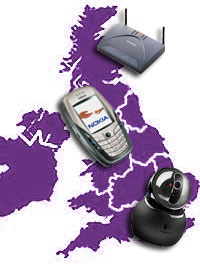 Brits are going wild for the latest technological innovations according to market research firm GfK in its biannual ‘UK Technology Barometer report.’
Brits are going wild for the latest technological innovations according to market research firm GfK in its biannual ‘UK Technology Barometer report.’ Not surprisingly, smartphones continue to set the cash tills ringing with a big increase in sales, while single-function PDAs are carrying on their slow decline, with sales slumping by 38.3%.
Not surprisingly, smartphones continue to set the cash tills ringing with a big increase in sales, while single-function PDAs are carrying on their slow decline, with sales slumping by 38.3%.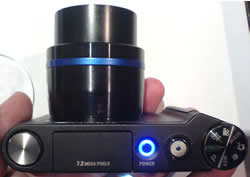 Samsung has released the details of their new digital camera range, Samsung NV – New Vision.
Samsung has released the details of their new digital camera range, Samsung NV – New Vision.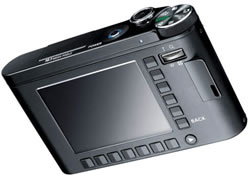 The NV3 is the one that we think will get you most excited dear reader. It’s not only a camera, but an mp3 player and PMP, so it can play films too. It’s equipped with stereo speakers, so you can share you tunes too.
The NV3 is the one that we think will get you most excited dear reader. It’s not only a camera, but an mp3 player and PMP, so it can play films too. It’s equipped with stereo speakers, so you can share you tunes too.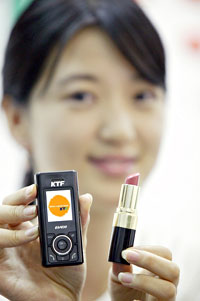 Korean technology company KTF Technologies have unveiled a teensy-weensy phone, which is “smaller then a lipstick.”
Korean technology company KTF Technologies have unveiled a teensy-weensy phone, which is “smaller then a lipstick.” KTF Technologies, are the handset-making subsidiary of Korea’s second biggest wireless carrier, KTF, and the company has said that it intends to market the mini-sized slider, EV-K130 from this week, priced at around 370,000 won (approx £210, €305).
KTF Technologies, are the handset-making subsidiary of Korea’s second biggest wireless carrier, KTF, and the company has said that it intends to market the mini-sized slider, EV-K130 from this week, priced at around 370,000 won (approx £210, €305).